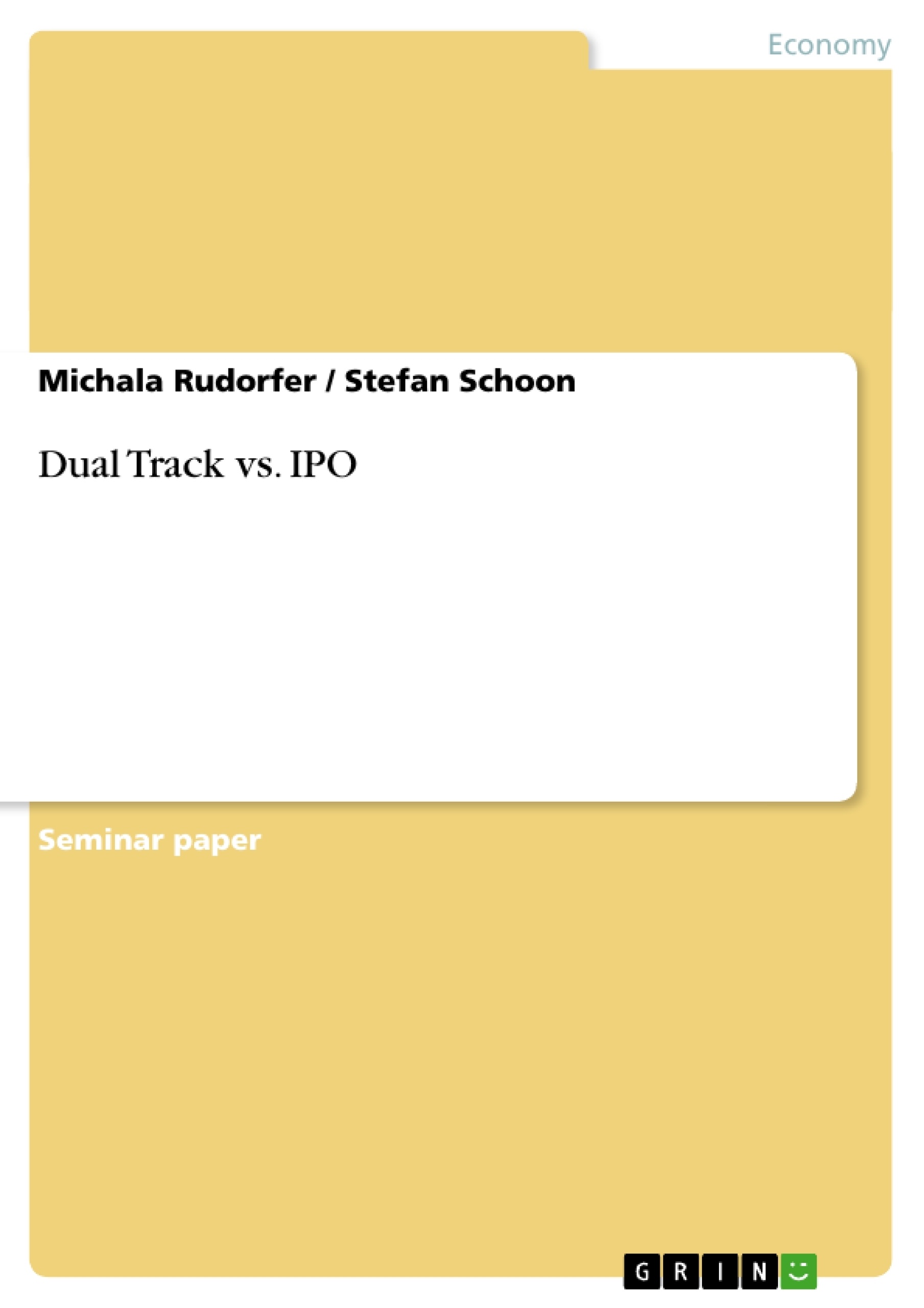This paper analyzes “dual tracking”, a useful marketing tool to increase the valuation of a private company. In line with this paper, dual tracking only refers to the choice between M&A and IPO in later stages of the selling process. In spite of an increasing number of major dual tracks, the idea is still widely unknown. In particular the scholastic world has rarely picked up this subject. This lack of academic research motivates to
explore the concept in more detail. Thereby, the focus lies on the choice between M&A and IPO and on the interaction between the equity market and the M&A market. In this context, the key question is how the capital market reacts to an acquisition of a dual tracking firm.
Table of Contents
- Introduction
- Problem Definition and Objectives
- Course of Analysis
- Literature Review
- Different exit strategies
- Concept of Initial Public Offering
- Definition and Process of Initial Public Offerings
- Equity Market Development
- Concept of Mergers & Acquisitions
- Definition and Process of Mergers & Acquisitions
- Mergers & Acquisitions Market Development
- Reactions of Acquirers' Returns to the Acquisition Announcement
- Critical Comparison of Mergers & Acquisitions and Initial Public Offerings
- The Concept of Dual tracking
- Definition of and Rationale for Dual Tracking
- Process and Procedures of Dual Tracking
- The Chances of Dual Tracking
- The Chances from the Target's Perspective
- The Chances from the Acquirer's Perspective
- The Risks of Dual Tracking
- The Risks from the Target's Perspective
- The Risks from the Acquirer's Perspective
- Recent Dual Tracks
- Saga Group plc.
- Praktiker Bau- und Heimwerkermärkte Holding AG
- An Empirical Analysis of Acquirer Returns
- Theoretical Implications
- Sample Description
- Selection of the Data
- Characteristics of the Sample
- Methodology of the Event Study
- Results of the Event Study
- Analysis of Acquirers' Returns
- Comparison of Different Acquirers' Returns
- Multivariate Regression of Acquirers' Abnormal Returns
- Critical Evaluation of the Event Study
- Limits of the Sample
- Limits of Methodology
Objectives and Key Themes
This paper aims to analyze "dual tracking," a strategy used to increase the valuation of a private company before a sale. The focus is on the choice between mergers and acquisitions (M&A) and an initial public offering (IPO), and how the equity and M&A markets interact. The key question is how the capital market reacts to the acquisition of a company employing a dual-tracking strategy.
- The concept and process of dual tracking.
- Comparison of M&A and IPO strategies.
- Market reaction to the acquisition of dual-tracking firms.
- Analysis of acquirer returns in dual-tracking transactions.
- Identification of factors influencing acquirer returns.
Chapter Summaries
The introduction sets the stage, defining the problem and outlining the analysis. Chapters on M&A and IPO strategies provide a theoretical foundation. The core section explores dual tracking, defining it, outlining its process, and examining its advantages and disadvantages from both the target and acquirer's perspective. Case studies of recent dual-track transactions are presented. Finally, an empirical analysis examines acquirer returns through an event study, analyzing the results and limitations of the study's methodology.
Keywords
Dual tracking, mergers and acquisitions (M&A), initial public offering (IPO), acquirer returns, event study, capital market reaction, equity market, valuation.
- Quote paper
- Michala Rudorfer (Author), Stefan Schoon (Author), 2006, Dual Track vs. IPO, Munich, GRIN Verlag, https://www.grin.com/document/125577




